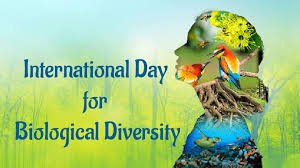Understanding Biodiversity and Its Importance
Biodiversity, commonly understood as the variety of life on Earth, encompasses the diversity of species, ecosystems, and genetic variations that collectively contribute to the richness of our planet. This intricate web of life serves as the foundation for all biological processes and is crucial for sustaining the health of ecosystems. Biodiversity is not merely a characteristic of nature; it plays a pivotal role in promoting sustainable development and ensuring the resilience of our environment.
The significance of biodiversity extends far beyond the intrinsic value of species themselves. Every organism, from the smallest microorganism to the largest mammal, contributes to the functionality of ecosystems. These complex relationships between species foster ecosystem services that are essential for human survival, including clean air and water, pollination of crops, and climate regulation. As such, the interplay among various organisms enables ecosystems to thrive, supporting both human societies and natural habitats.
Moreover, preserving biodiversity is vital for enhancing food security and combating the impacts of climate change. Biodiverse agricultural systems promote genetic resilience, allowing crops and livestock to adapt to changing environmental conditions. This adaptability is increasingly critical as climate variability poses significant challenges to food production. Additionally, diverse ecosystems provide natural buffers against diseases and pests, further underpinning agricultural stability.
Human activities, such as deforestation, pollution, and urbanization, pose substantial threats to biodiversity. The loss of habitats and the extinction of species can disrupt the balance within ecosystems, ultimately jeopardizing human well-being. Therefore, understanding biodiversity is not just an ecological issue but a pressing concern that intertwines with economic and social dimensions. Recognizing its importance is pivotal in driving global efforts towards sustainability and conservation.
The Crisis of Biodiversity Loss
The current crisis of biodiversity loss represents one of the most pressing environmental challenges facing our planet today. As we enter an era marked by rapid ecological degradation, it is crucial to understand the multifaceted factors contributing to this alarming decline. Various human activities have accelerated this trend, leading to the extinction of numerous species and the disruption of ecosystems essential for maintaining life.
One of the primary drivers of biodiversity loss is pollution, which has far-reaching effects on both terrestrial and aquatic ecosystems. Contaminants such as plastics, heavy metals, and toxic chemicals infiltrate natural habitats, harming wildlife and diminishing the quality of the environments they depend on. Polluted waterways not only destroy aquatic life but also impact the health of communities reliant on these resources for their livelihoods.
Another significant contributor is climate change, which alters the conditions necessary for many species’ survival. Rising temperatures and erratic weather patterns force many organisms to adapt, migrate, or face extinction. Moreover, the destruction of natural habitats through urbanization and agricultural expansion further compounds the problem, fragmenting ecosystems and making it challenging for species to adapt to changing environments.
Additionally, short-sighted human activities such as overfishing, deforestation, and the introduction of invasive species exacerbate the crisis. These practices not only threaten individual species but also destabilize entire ecosystems, leading to a cascading effect that impacts various forms of life. As we witness the decline of biodiversity, it becomes evident that the interconnectedness of species is vital for a healthy planet and that urgent action is required worldwide. The interdependence of nations in addressing biodiversity loss underscores the need for collaborative solutions to combat this global challenge effectively.
The Global Framework for Action: Kunming-Montreal Biodiversity Framework
The Kunming-Montreal Global Biodiversity Framework represents a significant initiative aimed at reversing the alarming trends in biodiversity loss worldwide. Adopted during the 15th meeting of the Conference of the Parties to the Convention on Biological Diversity (CBD), this framework establishes a comprehensive roadmap for countries to collaborate in fostering sustainable development practices that benefit both people and ecosystems. Its primary objectives include the protection and restoration of biodiversity, promoting sustainable use of nature, and ensuring equitable sharing of resources.
One of the cornerstone principles of the Kunming-Montreal Global Biodiversity Framework is the necessity for collective action. Countries are encouraged to set ambitious yet achievable targets, fostering a global commitment to halt biodiversity loss. Through this collaborative spirit, the framework not only addresses the immediate challenges posed by habitat destruction, climate change, and overexploitation of resources but also aims to create a long-term vision that aligns conservation efforts with sustainable development goals (SDGs).
Implementing the Kunming-Montreal framework necessitates a multi-faceted approach, incorporating various policies and strategies tailored to national circumstances. Countries are urged to enhance their governance structures, improve data collection, and develop innovative financial mechanisms to secure the resources required for effective biodiversity conservation. Such efforts include promoting the integration of biodiversity considerations into economic planning and decision-making, fostering sustainable agricultural practices, and supporting the establishment of protected areas.
By uplifting the dialogue surrounding biodiversity and disseminating actionable insights through the Kunming-Montreal Global Biodiversity Framework, we set the stage for a paradigm shift toward sustainability. It mobilizes nations, stakeholders, and local communities alike, ultimately leading to a harmonious balance between human development and the preservation of nature.
Empowering Sustainable Development: Roles of Governments and Communities
Governments and local communities play pivotal roles in fostering sustainable practices essential for preserving biodiversity. Effective governance is key to incentivizing financial frameworks that prioritize environmental stewardship over destructive practices. By shifting financial incentives toward sustainability, governments can encourage industries and sectors to adopt eco-friendly methods, thus safeguarding biodiversity. For instance, providing subsidies for sustainable agriculture or funding for conservation projects can help catalyze a significant change in how resources are utilized.
Moreover, creating comprehensive national biodiversity strategies is crucial. These strategies must incorporate diverse perspectives and expertise, particularly those rooted in the local context. Governments should designate resources toward developing policies that are not only scientifically informed but also culturally sensitive. Inclusive decision-making processes that engage local communities allow for the integration of traditional knowledge, which is vital in crafting strategies that resonate with those who directly depend on natural ecosystems for their livelihood. This engagement is critical in ensuring that biodiversity conservation efforts are effectively implemented and respected.
Furthermore, empowering marginalized groups—particularly women and indigenous populations—can enhance the effectiveness of biodiversity conservation efforts. These groups often possess invaluable knowledge and skills, which, when included, can lead to more effective conservation practices. Promoting gender equity in environmental governance not only creates a stronger, more resilient community but also reflects a commitment to social justice and sustainability. Inclusive approaches that recognize the important contributions of all community members can foster a sense of ownership and responsibility toward local ecosystems.
In conclusion, the collaborative efforts of governments and local communities are essential for advancing sustainable development and defending biodiversity. By adopting inclusive policies and empowering all stakeholders, we can initiate meaningful actions that protect our planet’s rich biodiversity for future generations.

